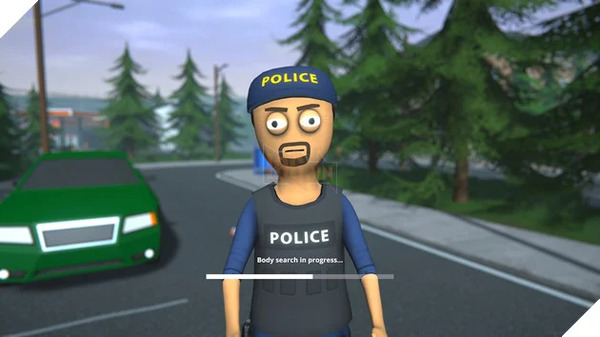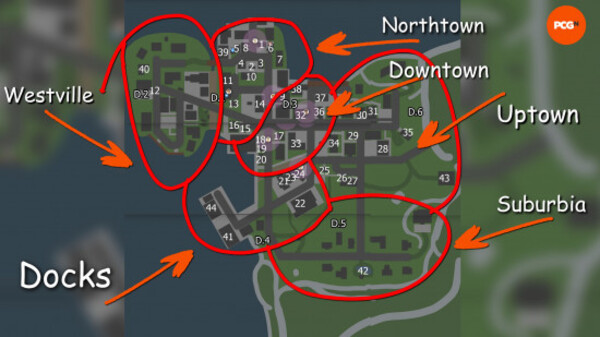Popular Now
Schedule I is not your typical survival horror or action adventure. It combines psychological tension, stealth-based gameplay, and resource management in a dystopian world governed by unseen rules and lurking threats. Unlike traditional games, Schedule I drops you into a cryptic bureaucratic nightmare where every decision carries consequence—and often, the cost of survival.
In this guide, we’ll walk through how to progress from a confused newcomer to a confident player navigating the surreal corridors of Schedule I. Whether you're here for story depth or raw strategy, this is your go-to manual.

1. How to Begin Your First Run in Schedule I
Starting out in Schedule I is intentionally disorienting. The tutorial is minimal, and the world feels cold and indifferent. That’s on purpose.
Understanding the Premise and Objective
Schedule I starts with you waking up in a monitored facility. You are part of a vague "Schedule Enforcement Program"—your task is to follow a tightly regulated daily timetable while surviving threats that become clearer (and stranger) over time.
Basic Controls and Environment Navigation
While exploring:
-
Use WASD to move.
-
Tab opens your Task Log and Objectives.
-
F interacts with terminals, objects, or clues.
-
Shift to sprint—but noise draws attention.
Get familiar with these controls in the first "Administrative Wing." Don’t rush. Read logs, check doors, and stay observant.
2. How to Read the Task Schedule Without Getting Penalized
In Schedule I, your main guide is the daily task schedule. Failing to complete tasks correctly results in deductions—points, health, or sanity.
Interpreting the Schedule Board
Every in-game morning, a "Schedule Board" outlines five primary tasks. These might seem mundane (e.g., "Attend Filing at 09:00") but their location, timing, and order are vital.
Tips for Task Execution
-
Arrive early—being late increases risk.
-
Complete tasks in order unless circumstances prevent it.
-
Check terminals in break rooms for schedule changes.
Punishments can be brutal: the lights may flicker, security drones may activate, or the environment itself may shift. Stay on task.
3. How to Manage Time and Movement Efficiently
With looming deadlines and threats, time management is everything. Each “hour” in-game is about 2–3 real-time minutes, so prioritize.
Map Familiarity
Learning the facility layout—Maintenance Hall, Intake Ward, Sector F—is essential. Keep a mental map or refer to the public terminals showing floor plans.
Avoiding Backtracking and Loops
To reduce wasted time:
-
Combine tasks by proximity.
-
Use shortcut elevators if available.
-
Avoid known hostile zones unless required.
Make every movement count. Some players even keep a written schedule. You’ll understand why after your first few deaths.
4. How to Avoid Detection and Stay Hidden
There are no traditional enemies at first—just a feeling of being watched. But as time passes, Entities begin to manifest. Avoiding detection becomes key.

Understanding Hostile Patterns
The first “Entity” you’ll encounter is The Auditor. It patrols hallways, punishing "noncompliance."
-
Don’t run when it’s nearby.
-
Avoid staring directly at it.
-
Hide in janitor closets or under tables.
Noise and Light Discipline
-
Sprinting attracts attention.
-
Turning on lights may reveal you.
-
Use sound indicators to listen for nearby danger.
Stealth is more than staying out of sight—it's managing your presence. Leave minimal footprints behind, figuratively and literally.
5. How to Decode Terminal Logs and Secret Messages
Schedule I is filled with oblique messages and cryptic files. While optional, reading them gives lore insights and survival clues.
Using the Right Terminals
Terminals come in types:
-
Green Terminals show task logs and updates.
-
Blue Terminals contain staff emails and intercom logs.
-
Red Terminals unlock secret zones and entity research files.
Pattern Recognition
-
Dates repeat in strange loops.
-
Codes found in one wing might unlock doors in another.
-
Use found USBs in special readers to decode hidden instructions.
Journaling helps. Many high-level players keep in-game notebooks or screenshots. Knowledge is power—and protection.
6. How to Use Tools and Items Smartly
Throughout the facility, you’ll find tools like Security Cards, Noise Dampeners, and Anomalous Batteries. But your inventory is limited.
Prioritize Versatile Items
Useful items to always keep:
-
Security Card Tier 2+: Unlocks most restricted areas.
-
Flicker Suppressor: Stabilizes lights and reduces hallucinations.
-
Protocol Tape: Reveals truths about upcoming threats when played.
Inventory Strategy
-
Use lockers to store backup items.
-
Trade lesser-used tools in vending exchanges (rare).
-
Combine items for enhanced effects (only after deciphering correct recipes).
Mismanaging tools leads to disaster. Don’t hoard everything—carry only what’s essential for your route and schedule.
7. How to Unlock and Survive the Mid-Game Shifts
By Day 4 or 5, Schedule I transforms. Hallways change, enemies multiply, and tasks become morally ambiguous.

Shift Events
Each “shift” in the timeline triggers changes:
-
Red Shift: Certain doors become inverted; forward progress reverses.
-
Audit Phase: All player behavior is judged retroactively.
-
Entity Spill: Entire wings may become corrupted.
Anticipate these events by reading upcoming logs or noticing visual/audio cues (e.g., blood drips, reversed clocks).
Surviving the New Threats
-
Use Mirrored Badges to reflect surveillance beams.
-
Distract new enemies like “The Observer” with looping audio logs.
-
Complete your tasks no matter how ethically questionable—resistance has a cost.
This is where most players quit or restart. Push through. The story opens up in ways you won’t expect.
8. How to Solve Puzzles and Unlock Secret Areas
Some of Schedule I’s most powerful tools are hidden behind obscure puzzles or impossible-feeling logic problems.
Puzzle Types and Patterns
-
Chrono Locks: Require time-specific input (e.g., 03:14 only).
-
Schedule Reversals: Complete tasks in reverse order.
-
Tone Keys: Use sound devices to match door frequencies.
Each secret area reveals new storylines, faster travel routes, or even alternate endings. Expect to replay to find them all.
Help for Puzzle Solving
-
Screenshots help with environmental puzzles.
-
Team up on Reddit or forums if you’re stuck—some puzzles require collective knowledge.
-
Carry the Echo Recorder item—it remembers what you forget.
The game rewards curiosity. If something looks “off,” investigate. No detail is without purpose.
9. How to Reach and Understand the Endgame
Once you’ve completed your full schedule (around 8–12 in-game days), new doors open—literally and metaphorically.
Preparing for Final Clearance
Before the endgame:
-
Collect 3+ Final Clearance Codes.
-
Have your Sanity Meter above 60%.
-
Avoid killing any entities unnecessarily (yes, it affects your outcome).
You’ll face a moral choice: comply, rebel, or rewrite the schedule. Each choice changes the world—some more drastically than others.
Multiple Endings
There are at least four major endings, each based on:
-
Compliance level
-
Hidden item collections
-
Secret logs discovered
-
Timing of final tasks
Replays are encouraged. Each ending reveals a new layer of the overarching narrative.
10. How to Continue After Your First Completion
Schedule I isn’t really over when the credits roll. New Game+ and Post-Compliance Modes are waiting.

What Unlocks After Completion
-
NG+ Schedules include impossible tasks, reversed logic, and new rooms.
-
Specter Mode lets you play as an entity in multiplayer challenges.
-
The True Schedule introduces the “Supervisor Algorithm”—a mind-bending storyline twist.
Community and Mods
-
Join community Discords for lore hunting and schedule theories.
-
Use developer-approved mods to add new schedule types or expand lore.
-
Participate in “Unscheduled” events—dev-curated mystery puzzles.
Schedule I evolves over time. What you think you understand today may be obsolete tomorrow. That’s the brilliance of it.
Conclusion
Schedule I is an intricate game of survival, compliance, and moral decision-making hidden beneath layers of bureaucracy and horror. Mastering it means far more than surviving—it requires unraveling its mysteries, managing resources, solving cryptic puzzles, and making impossible choices.
From learning how to read your schedule and avoid detection, to exploring secrets and unlocking multiple endings, this game rewards both persistence and intelligence. Each replay uncovers new depths, and each task carries weight in ways you might not expect.
If you’ve made it this far, you’re not just surviving—you’re mastering the schedule. And maybe, just maybe, rewriting it.


















